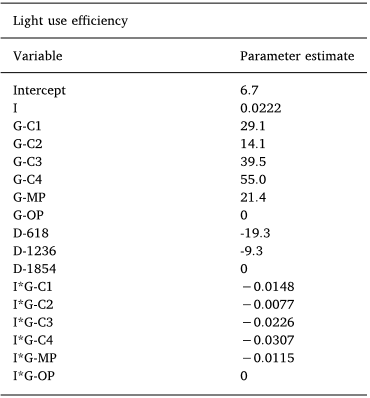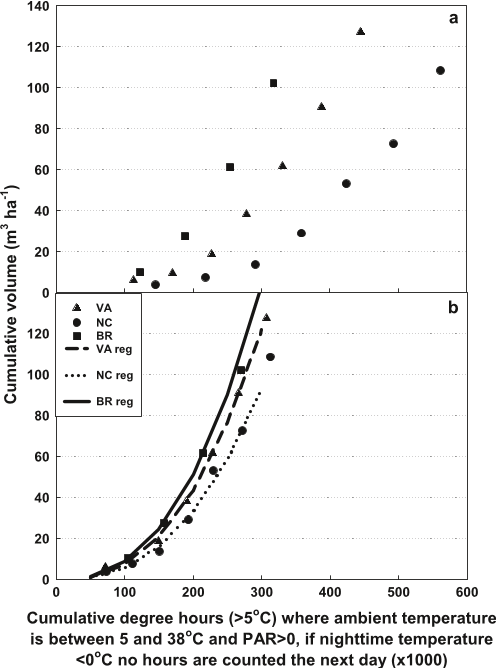Abstract: We examined crown architecture and within crown leaf area distribution effects on Pinus taeda L. growth in North Carolina (NC), Virginia (VA), and Brazil (BR) to better understand why P. taeda can grow much better in Brazil than in the southeastern United States. The NC, VA, and BR sites were planted in 2009, 2009, and 2011, respectively. At all sites, we planted the same two genetic entries at 618, 1236, and 1854 trees ha−1. In 2013, when trees were still open grown, the VA and NC sites had greater branch diameter (24%), branch number (14%), live crown length (44%), foliage mass (82%), and branch mass (91%), than the BR site. However, in 2017, after crown closure and when there was no significant difference in tree size, site did not significantly affect these crown variables. In 2013, site significantly affected absolute leaf area distribution, likely due to differences in live crown length and leaf area, such that there was more foliage at a given level in the crown at the VA and NC sites than at the BR site. In 2017, site was still a significant factor explaining leaf area distribution, although at this point, with crown closure and similar sized trees, there was more foliage at the BR site at a given level in the crown compared to the VA and NC sites. In 2013 and 2017, when including site, genetic entry, stand density, and leaf area distribution parameters as independent variables, site significantly affected individual tree growth efficiency, indicating that something other than leaf area distribution was influencing the site effect. Better BR P. taeda growth is likely due to a combination of factors, including leaf area distribution, crown architecture, and other factors that have been identified as influencing the site effect (heat sum), indicating that future work should include a modeling analysis to examine all known contributing factors.







